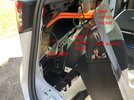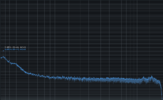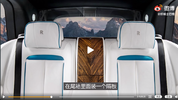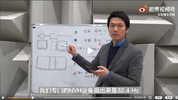No solutions, but a few more thoughts:
I was curious what other EV manufacturers might do to eliminate these noises, so I did some searching on the Mercedes EQS Sedan. I was surprised to find that the EQS actually has a rear
hatch, similar to the Model S. Because of this, they faced many of the same low-frequency noise challenges. MB was kind enough to detail some of the countermeasures in
press releases.
Particularly interesting:
"New solutions had to be found due to the concept-related lack of a partition between the interior and the trunk and the aluminum alloys used in many places.
Low-frequency noise, which can be perceived as reducing comfort, is prevented by filling numerous cavities in the body with acoustically effective foam."
"The magnets inside the rotors are arranged in an NVH-optimized way (sheet metal cut). This also reduces the use of rare earths. The shape of the winding, the stator tilt, also supports vibration comfort, especially at low speeds. In relation to the permanent magnets of the rotor, the coils of the stator are obliquely wound. Otherwise, what is known as cogging torque could occur.
This would lead to slight but unpleasant vibrations when driving at low speeds."
"Highly effective spring/mass components provide continuous sound insulation from the cross-member under the windscreen to the floor of the trunk. Acoustic foams are inserted into many carriers as early as the shell construction stage. Because the full-area main floor under the high-voltage battery is a component with a potentially high noise component, a new insulation part is used. A foam sealed in foil, enclosed in the seal of the battery lid, is clamped between the battery and the floor and prevents excitation. In addition, the main floor is designed with beads for NVH reasons.
These prevent resonance of the surface and thus the occurrence of a corresponding structure-borne sound. Two acoustic dividers in the very large tailgate reduce boom noise. These could be caused by roadway disruptions and are favored by the large volume of the cab including the bulkhead-free luggage compartment."
Just some food for thought. There is likely more that they aren't sharing related to the body shape, suspension bushings, motor mounting, constrained layer dampening, etc. Also looks like the Polestar 2
may have this issue as well.
Lastly, in my struggle as an audio person to understand why this noise is so annoying I thought about resonant frequencies. A search for "resonant frequency of the ears/skull" turned up articles about a study from the Acoustical Society of America called "
Music of the Body: An investigation of skull resonance and its influence on musical preference."
They ran a test to determine the resonant frequency of a group of people's skulls. The results ranged from 35-65 Hz, with the larger heads having the lower resonant frequencies. I ran the test, purely for fun, and it may have pointed to 31 Hz. (guess I have a big head!)
Results definitely inconclusive. Again, just for fun.







